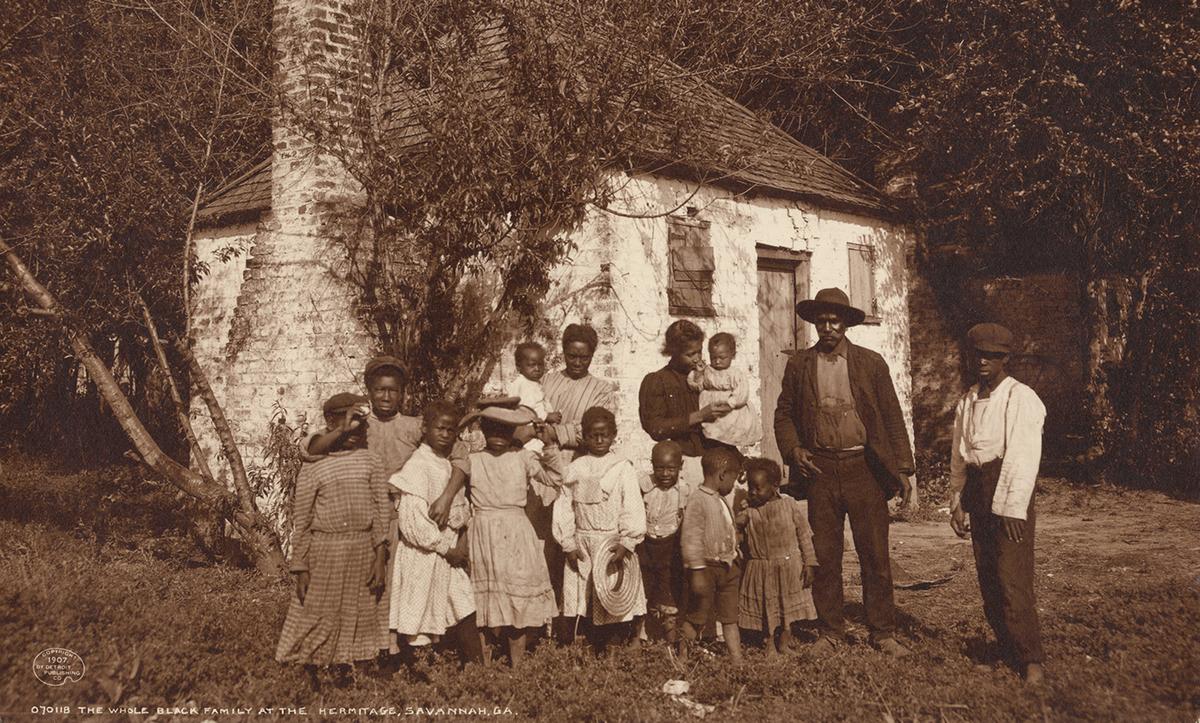- Mar 11, 2015
- 101,454
- 110,439
- 3,645
- Thread starter
- Banned
- #101
flacaltenn, Please stop. You make me laugh.IM2 -- ran across this looking up the number of land rushers that got Oklahoma grants. Seems like that CRAP 40% false fact has a deeper racial angle to it than I thought.
A very LARGE number of blacks DID benefit from opening the Oklahoma territory and even if not ALL of them GOT the original grants -- they got undeveloped back breaking land "on the cheap".. Next time you go peddling this 40% of Americans live on granted land shit -- remember the ACTUAL history of this.
Land Rush of 1889 - Wikipedia
en.wikipedia.org
African-Americans
African Americans had been trying to find communities they could settle without the worries of racism against them. When the Land Rush took place, black families had been building their own way of life and culture since the Reconstruction era. Even in the Oklahoma Territory, the five main Native American Tribes had to sign agreements with the US government that they would no longer practice slavery, and if they continued, they would be exempted from their land by the United States.[27]
During the Land Rush, it was a growing belief within the African American community that this opening of free land was their opportunity to create communities of their very own, without the influence of racism. Their intentions were to make Oklahoma a state just for them. One organization that took advantage of this movement was the Oklahoma Immigration Organization owned by W. L. Eagleson. Eagleson spread the announcement of recolonization to the black community throughout the United States, especially focused in the South.[28]
U.S. land office after the Land Rush of 1889.
One attempt to make Oklahoma a black state was to appoint Edward Preston McCabe as the governor of the Oklahoma Territory. This would make it easier for black families to settle within the region during the land rush. This plan failed, as there seemed to be less and less excitement of immigrating to the new land, and instead McCabe had to settle to being a treasurer in Logan County of Oklahoma.[28]
The attempts of people like Eagleson and McCabe were not completely futile as their support of the black family did enthuse many to continue to move to the Oklahoma Territory. These movements did become townships, such as Kingfisher.[28]

All-Black Towns | The Encyclopedia of Oklahoma History and Culture
www.okhistory.org
The All-Black towns of Oklahoma represent a unique chapter in American history. Nowhere else, neither in the Deep South nor in the Far West, did so many African American men and women come together to create, occupy, and govern their own communities. From 1865 to 1920 African Americans created more than fifty identifiable towns and settlements, some of short duration and some still existing at the beginning of the twenty-first century.
All-Black towns grew in Indian Territory after the Civil War when the former slaves of the Five Tribes settled together for mutual protection and economic security. When the United States government forced American Indians to accept individual land allotments, most Indian "freedmen" chose land next to other African Americans. They created cohesive, prosperous farming communities that could support businesses, schools, and churches, eventually forming towns. Entrepreneurs in these communities started every imaginable kind of business, including newspapers, and advertised throughout the South for settlers. Many African Americans migrated to Oklahoma, considering it a kind of "promised land."
When the Land Run of 1889 opened yet more "free" land to non-Indian settlement, African Americans from the Old South rushed to newly created Oklahoma. E. P. McCabe, a former state auditor of Kansas, helped found Langston and encouraged African Americans to settle in that All-Black town. To further his cause, McCabe established the Langston City Herald and circulated it, often by means of traveling agents, throughout the South. McCabe hoped that his tactics would create an African American political power block in Oklahoma Territory. Other African American leaders had a vision of an All-Black state. Although this dream was never realized, many All-Black communities sprouted and flourished in the rich topsoil of the new territory and, after 1907, the new state.
Seems like a lot of towns failed. People went back East. Probably true for white settlements as well.
Hey IM2 -- Where did all the wealth and privilege go from the ambitious and brave BLACK Land Rushers? Did YOU get a piece of the action?
C'mon on now. 'Fess up. What did YOU do with all that privilege and inheritance from land rushing grants?

Passed in 1862, the Homestead Acts gave away 246 million acres of land. To qualify for Homestead land a person had to be a citizen of the United States and blacks were not given citizenship until 1866. Research shows that 99.73 percent of that land went to whites, including white immigrants. 1.5 million white families were given free land or the equivalent of a minimum of $500,000 per family. Today 93 million whites still live on homestead land, which is at least 40 percent of the white population in America.
Shawn D Rochester, The Black Tax: The Cost of Being Black in America, pp, 49, Good Steward Publishing, Southbury CT., 2018
"As early as 1865, certain white Southerners put legal obstacles in place to prevent ex-slaves from acquiring property. Magdol (1977) explains, In the provisional state governments under President Johnson’s protective leniency, planters not only prohibited black landownership but enacted extreme measures of social control that virtually restored slavery. The black codes struck directly at freedmen striving to escape their subordination and to obtain their communities. It was class and race legislation."
Williams, T. (2000). The Homestead Act: A major asset-building policy in American history (CSD Working Paper No. 00-9). St. Louis, MO: Washington University, Center for Social Development. Pg.11
You keep looking for reasons to deny, you need to quit.
Furthermore, the recently emancipated owned no cash and had no experience in dealing with the government, rendering the process even more difficult. But perhaps the biggest hurdle for freedpeople involved the year-long labour contracts they had been cajoled or forced into signing shortly after slavery was outlawed. Leaving a job before the end date of a contract frequently resulted in virtual re-enslavement on a chain gang. Indeed, blacks had been locked into these contracts until the very date (1 January 1867) that they stopped receiving special homesteading benefits.
By the end of the SHA 10 years later, nearly 28,000 individuals had been awarded land. Combined with the claimants of the original Homestead Act, then, more than 1.6 million white families – both native-born and immigrant – succeeded in becoming landowners during the next several decades.
Conversely, only 4,000 to 5,500 African-American claimants ever received final land patents from the SHA.
The Homestead Acts were unquestionably the most extensive, radical, redistributive governmental policy in US history. The number of adult descendants of the original Homestead Act recipients living in the year 2000 was estimated to be around 46 million people, about a quarter of the US adult population. If that many white Americans can trace their legacy of wealth and property ownership to a single entitlement programme, then the perpetuation of black poverty must also be linked to national policy. Indeed, the Homestead Acts excluded African Americans not in letter, but in practice – a template that the government would propagate for the next century and a half.
With the advent of emancipation, therefore, blacks became the only race in the US ever to start out, as an entire people, with close to zero capital. Having nothing else upon which to build or generate wealth, the majority of freedmen had little real chance of breaking the cycles of poverty created by slavery, and perpetuated by federal policy. The stain of slavery, it seems, is much more widespread and lasting than many Americans have admitted. Yet it is the legacy of the Reconstruction – particularly the failure of land redistribution – that so closely coupled poverty and race in the US.

Land and the roots of African-American poverty | Aeon Ideas
The Homestead Act gave 1.6 million white families – and fewer than 6000 black families – 160 acres of virtually free land
